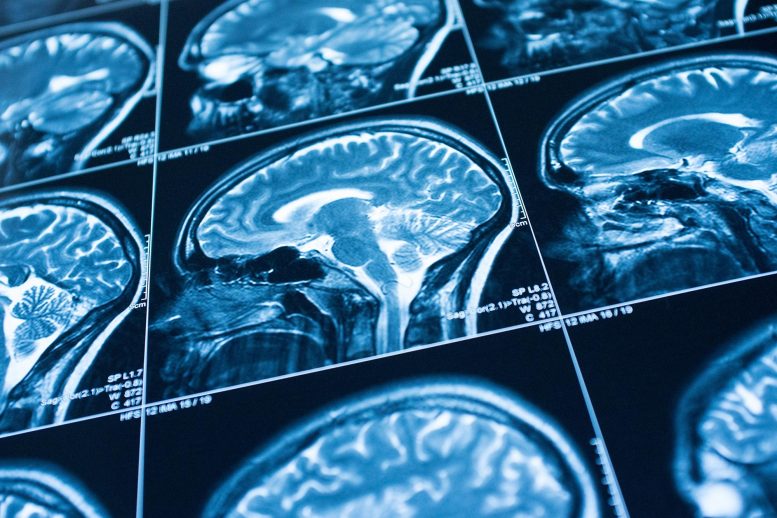
Older individuals in socioeconomically disadvantaged neighborhoods experience more brain shrinkage and faster cognitive decline compared to those in less disadvantaged areas.
Study finds evidence of more brain aging in people living in disadvantaged areas.
Middle-age and older people living in more disadvantaged neighborhoods — areas with higher poverty levels and fewer educational and employment opportunities — had more brain shrinkage on brain scans and showed faster decline on cognitive tests than people living in neighborhoods with fewer disadvantages, according to a study published in the April 14, 2021, online issue of Neurology®, the medical journal of the American Academy of Neurology. Researchers say such brain aging may be a sign of the earliest stages of dementia.
“Worldwide, dementia is a major cause of illness and a devastating diagnosis,” said study author Amy J. H. Kind M.D., Ph.D., of the University of Wisconsin School of Medicine and Public Health in Madison. “There are currently no treatments to cure the disease, so identifying possible modifiable risk factors is important. Compelling evidence exists that the social, economic, cultural, and physical conditions in which humans live may affect health. We wanted to determine if these neighborhood conditions increase the risk for the neurodegeneration and cognitive decline associated with the earliest stages of Alzheimer’s disease and dementia.”
For the study, researchers identified 601 people from two larger studies of Wisconsin residents. Participants had an average age of 59 and no thinking or memory problems at the start of the study, although 69% had a family history of dementia. They were followed for 10 years.
Participants had an initial MRI brain scan and then additional scans every three to five years. With each scan, researchers measured brain volume in areas of the brain linked to the development of Alzheimer’s dementia. Participants also took thinking and memory tests every two years, including tests that measured processing speed, mental flexibility, and executive function.
Researchers used the residential address of each participant and a measure called the Area Deprivation Index to determine if each participant lived in an advantaged or disadvantaged neighborhood. Neighborhoods in the index are determined by census areas of 1,500 residents. The index incorporates information on the socioeconomic conditions of each neighborhood and its residents, ranking neighborhoods based on 17 indicators including income, employment, education, and housing quality.
Of all participants, 19 people lived in the 20% most disadvantaged neighborhoods in their state and 582 people lived in the 80% of all other neighborhoods in their state. People in the first group were then matched one to four to people in the second group for race, sex, age, and education and compared.
At the start of the study, there was no difference in brain volume between people living in the most disadvantaged neighborhoods and those in other neighborhoods. But at the end, researchers found brain shrinkage in areas of the brain associated with dementia in people in the most disadvantaged neighborhoods, while there was no shrinkage in the other group. Researchers also found a higher rate of decline on tests that measure the risk of Alzheimer’s disease.
“Our findings suggest that increased vigilance by healthcare providers for early signs of dementia may be particularly important in this vulnerable population,” said Kind. “Some possible causes of these brain changes may include air pollution, lack of access to healthy food and healthcare, and stressful life events. Further research into possible social and biological pathways may help physicians, researchers, and policymakers identify effective avenues for prevention and intervention in Alzheimer’s disease and related dementia.”
Limitations of the study included a small number of participants from highly disadvantaged neighborhoods and a limited geographic setting. Future studies should involve larger and more diverse groups of people over longer periods of time.
Reference: “Association of Neighborhood Context, Cognitive Decline, and Cortical Change in an Unimpaired Cohort” by Jack F.V. Hunt, Nicholas M. Vogt, Erin M. Jonaitis, William R. Buckingham, Rebecca L. Koscik, Megan Zuelsdorff, Lindsay R. Clark, Carey E Gleason, Menggang Yu, Ozioma Okonkwo, Sterling C. Johnson, Sanjay Asthana, Barbara B. Bendlin and Amy J.H. Kind, 14 April 2021, Neurology.
DOI: 10.1212/WNL.0000000000011918
The study was supported by the National Institute on Aging, the National Institute on Minority Health and Health Disparities and the University of Wisconsin Institute for Clinical and Translational Research.









Be the first to comment on "Brain Shrinkage: Your Neighborhood May Affect Your Brain Health"